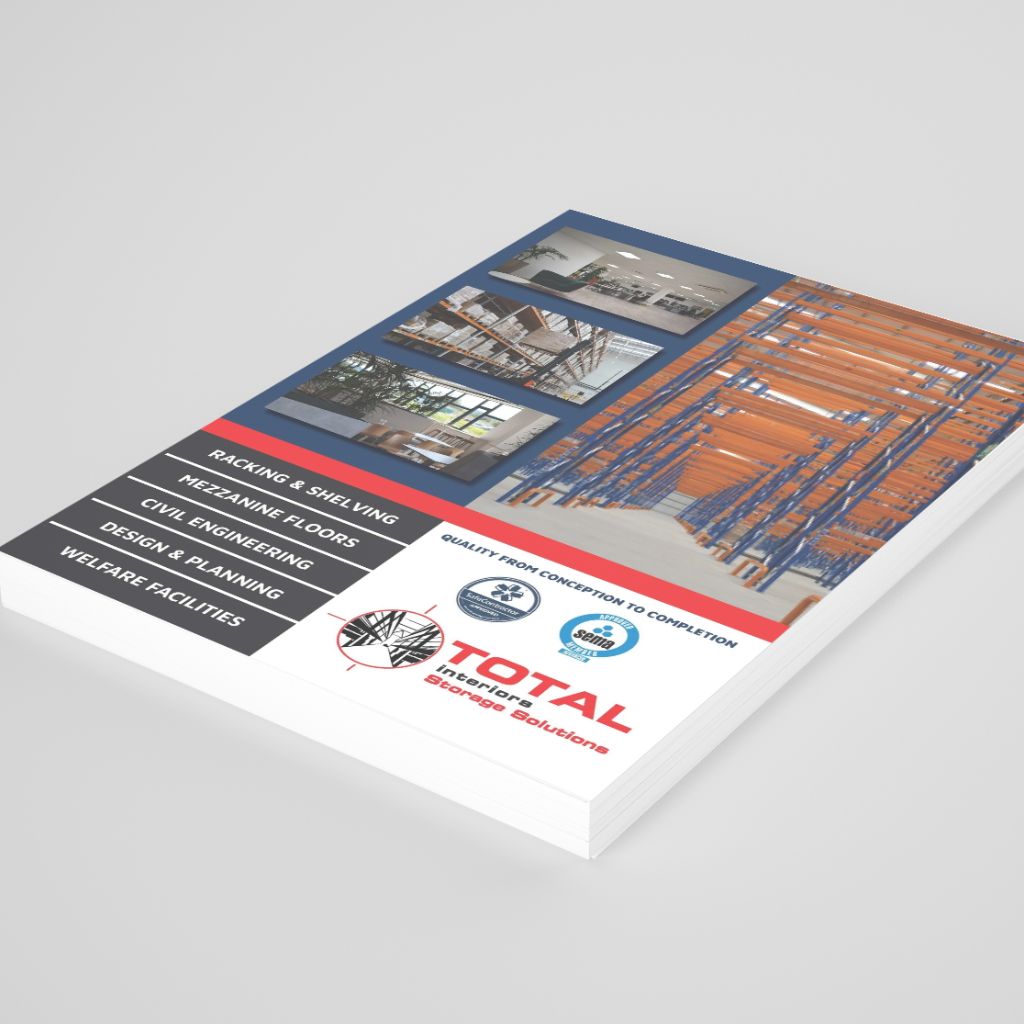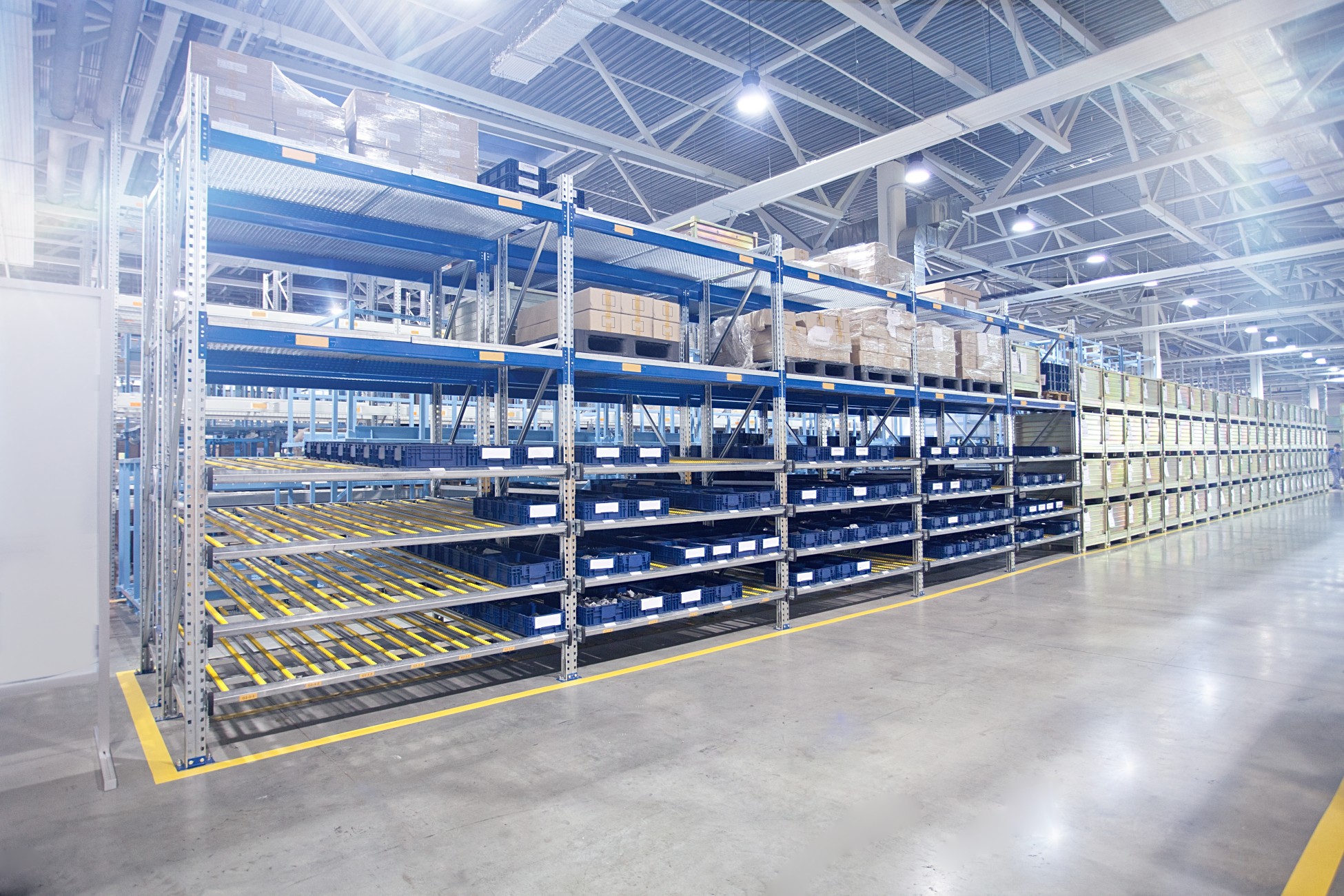
Office files, government records and healthcare records to archive storage, heavy-duty storage or mass industrial storage; no shelving system is too large or small for us.
Every business uses shelving in some form and the versatility of our shelving options means that we can bring a solution to your business that makes the best use of available space, whilst keeping the stored items easily accessible and sensibly organised for simple use.

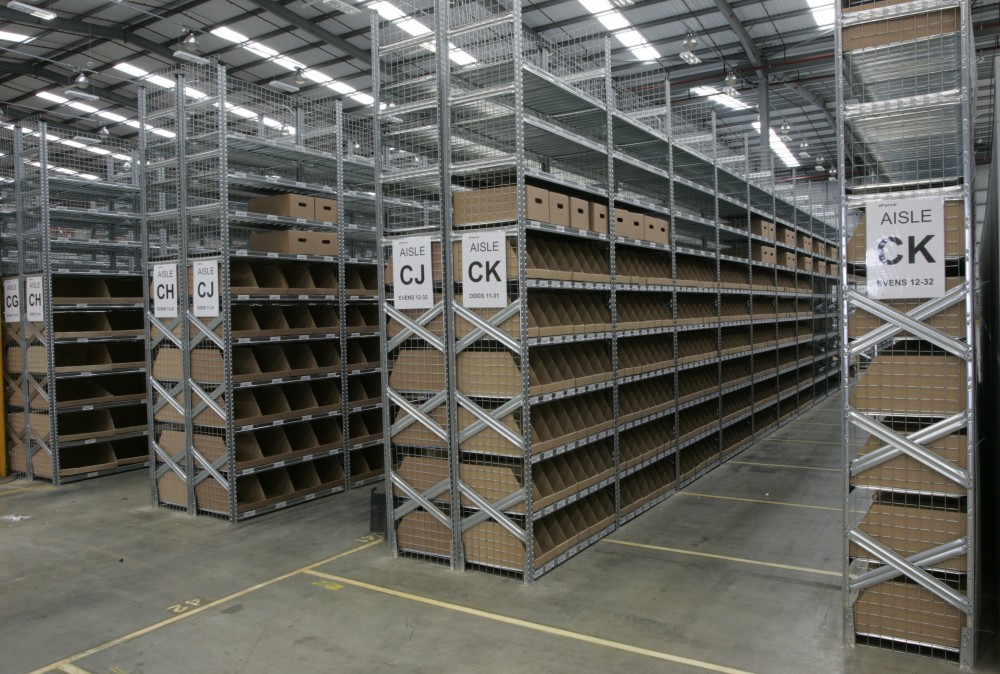
The right warehouse shelving can help you make the most of the space which you have available. If you’re in need of a cost-effective solution that consists of maximising the height of your shelving and reducing the footprint of your facility then we are suited to helping you. We supply a large range of styles and sizes to help you get the best solution for your warehouse.
As well as improving your warehouse efficiency, our team will work with you to put together a bespoke design which fits your business and building, as every building is unique from size to design.
For any additional information please contact us on 01905 757 506.
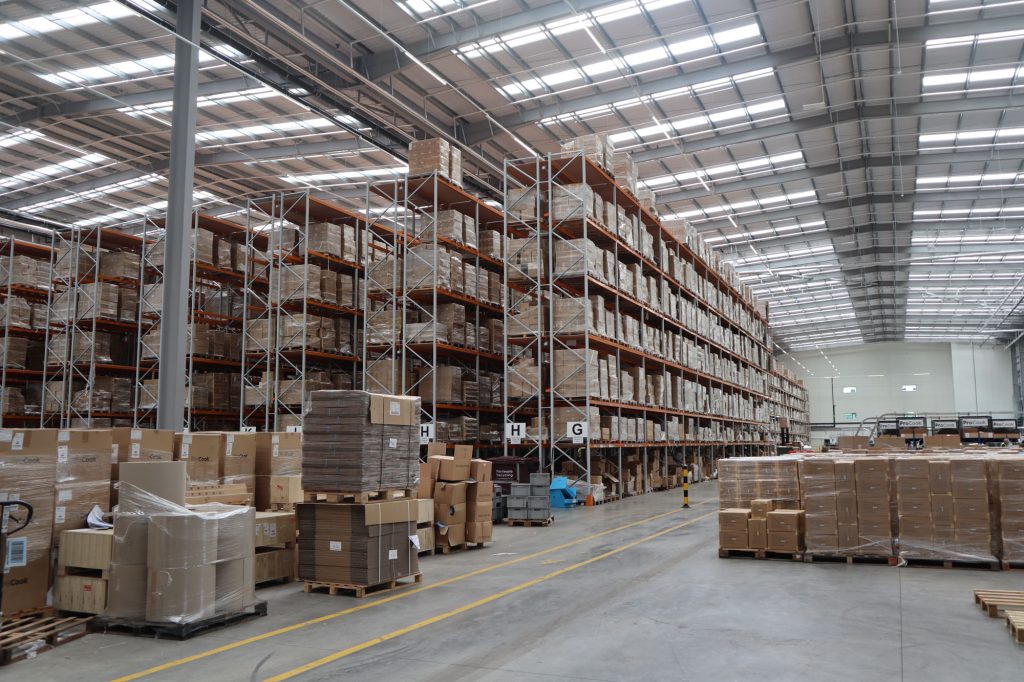
At Total Interiors Direct, we understand that no two businesses are alike. Each organisation has its own set of challenges, workflows, and storage needs. That’s why we offer custom industrial shelving solutions designed to meet the unique requirements of your business. Let’s explore the incredible benefits of these bespoke solutions.
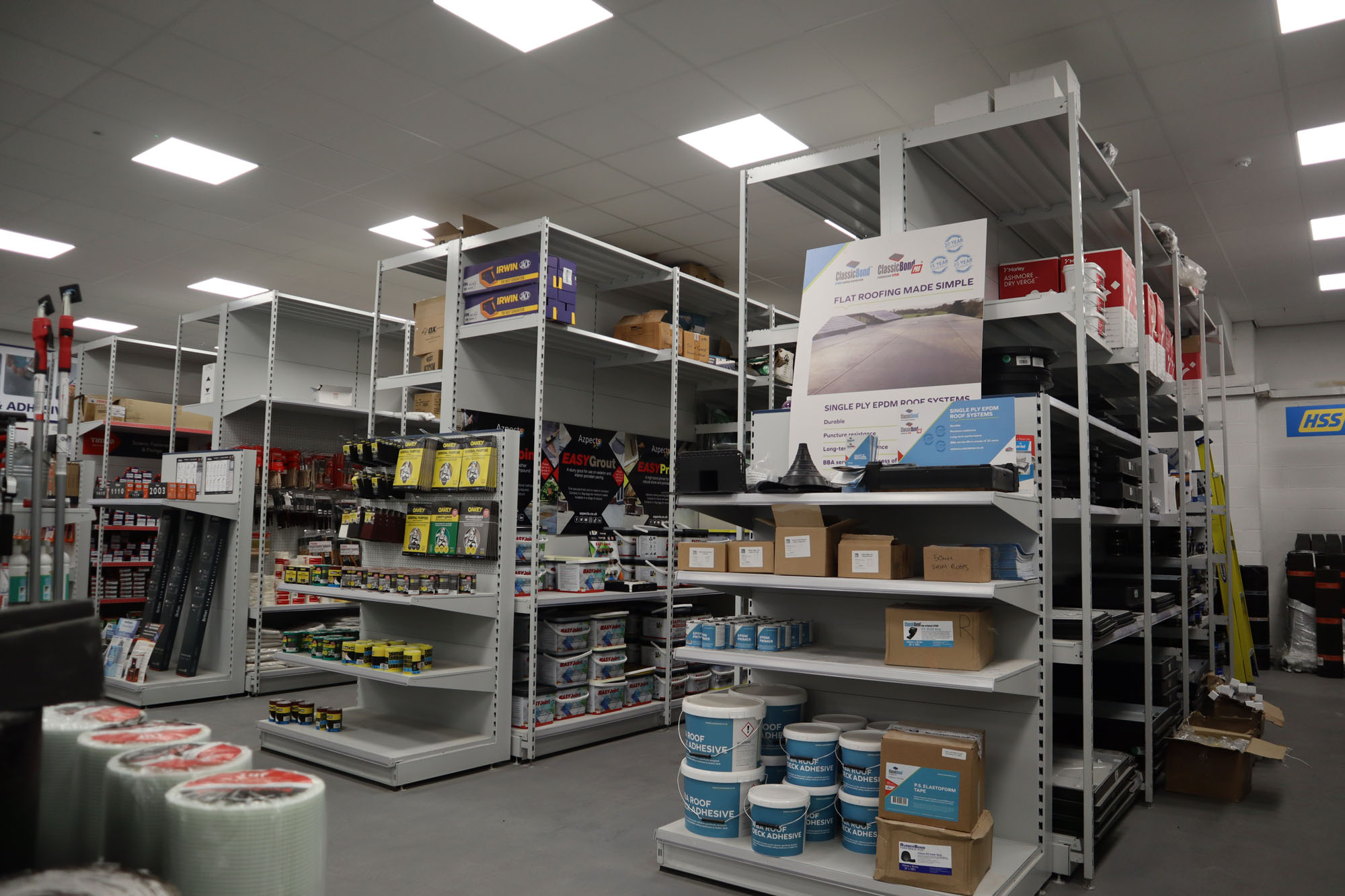
Ensuring the safety and longevity of your industrial shelving units requires regular maintenance and adherence to safety guidelines. Below, click on the tabs to learn how to help keep your industrial style shelving and racking systems in top condition.
Routine inspections are crucial for maintaining the safety and functionality of your industrial shelving and racking systems. Check for any signs of damage such as dents, rust, or warping. Ensure all bolts and connectors are tight and the shelving is stable. Inspections should be carried out at least once every quarter or after any incident that could potentially cause damage.
Every component of industrial pallet storage racks and shelving has a specific weight capacity. Exceeding this limit can lead to structural failures and accidents. Always check the manufacturer’s specifications for weight limits and ensure they are clearly marked on the shelving. Regularly train staff on the importance of adhering to these limits to prevent overloading.
Keeping your industrial shelving units clean not only prolongs their life but also reduces safety hazards. Remove debris and spills immediately to prevent rusting and slipping hazards. For metal shelving, use mild soap and water for cleaning; avoid using harsh chemicals that could corrode the metal.
Proper stacking techniques are essential for the safety of industrial shelving. Heavier items should be stored at the lower levels while lighter items should be placed higher up. Ensure that all items are evenly distributed and do not hang over the edges of the shelves. Use organisational tools like bins and dividers to keep smaller items secure.
Employees should be regularly trained on the correct usage of commercial shelving and safety procedures. This includes proper loading techniques, what to do in case of a structural concern, and emergency procedures. Regular refreshers on these topics can significantly reduce the risk of accidents.
When dealing with heavy items or high volumes, the use of appropriate loading equipment such as forklifts or pallet jacks is recommended. This not only ensures safety but also helps in maintaining the structural integrity of your industrial racking systems.
By following these maintenance and safety tips, you can ensure that your industrial shelving units remain safe and functional for years to come. Remember, a small investment in routine maintenance can prevent costly repairs and accidents in the future.
Efficient storage solutions are essential for businesses managing large inventories. Industrial shelving systems offer a versatile and efficient way to organise your storage space. Here are some practical tips to help you maximise storage efficiency and organisation using these systems.
Selecting the right industrial shelving is crucial for maximising space, enhancing workflow, and maintaining an organised work environment. Whether you run a warehouse, retail store, manufacturing facility, or any other business requiring storage solutions, the right shelving can make a significant difference. Here’s a guide to help you choose the most suitable industrial shelving based on your specific needs, space constraints, and industry requirements.
Ensure that shelving meets industry safety standards and can be safely anchored to prevent tipping. Consider additional safety features like guard rails, back panels, or anti-tip brackets, especially in high-traffic areas.
Look for shelving systems that offer customisation options like bins, dividers, and labels to further organise your space. Accessories such as wheels for mobility or extra reinforcement for heavy items can enhance functionality.
Efficient warehouse organisation is crucial for productivity and safety. Here are the best practices for organising your warehouse using industrial shelving.
Group Similar Items Together: Start by categorising inventory based on type, size, or frequency of use. This ensures that similar items are stored together, making them easier to locate.
ABC Analysis: Use the ABC analysis method to categorise items by their value and turnover rate. ‘A’ items are high-value with low turnover, ‘B’ items are moderate in both value and turnover, and ‘C’ items are low-value but high turnover. Place ‘A’ items on easily accessible shelves to streamline picking.
Zoning: Divide your warehouse into zones based on categories. This helps in maintaining order and reducing the time spent searching for items.
Clear Labels: Use large, easy-to-read labels for all shelves and bins. Include essential information such as item names, codes, and categories.
Colour-Coding: Implement a colour-coded labelling system. For example, use red for high-priority items, blue for regular stock, and green for low-priority items. This visual aid speeds up the identification process.
Barcode Systems: Integrate barcode systems for efficient tracking and inventory management. This technology reduces errors and speeds up the picking process.
Strategic Placement: Place frequently picked items at waist height to reduce bending and stretching. Store less frequently used items on higher or lower shelves.
FIFO Method: Adopt the First-In-First-Out (FIFO) method to ensure older stock is used before new stock. This prevents waste and ensures inventory turnover.
Aisle Layout: Design your aisles to be wide enough for easy movement of personnel and equipment. Ensure that high-traffic areas are free of obstructions.
Weight Distribution: Follow manufacturer guidelines for weight limits on each shelf. Distribute weight evenly to prevent tipping and collapsing.
Regular Inspections: Conduct regular inspections of shelving units to check for damage or wear. Promptly repair or replace any compromised shelving.
Training: Ensure all warehouse staff are trained on safe handling and storage practices. Proper training minimises the risk of accidents and injuries.
Review and Adjust: Regularly review your warehouse layout and shelving organisation. Make adjustments based on changes in inventory or workflow patterns.
Feedback: Encourage feedback from warehouse staff. They often have valuable insights into improving efficiency and safety.
Industrial shelving is a cornerstone of efficient storage and organisation in various sectors. Each industry has unique requirements for shelving solutions based on the nature of the goods they handle, space constraints, and operational workflows. Above, we explore how industrial shelving solutions are tailored to meet the specific needs of manufacturing, logistics, retail, and healthcare industries.
Industrial shelving is a cornerstone of efficient storage and organisation in various sectors. Each industry has unique requirements for shelving solutions based on the nature of the goods they handle, space constraints, and operational workflows. Above, we explore how industrial shelving solutions are tailored to meet the specific needs of manufacturing, logistics, retail, and healthcare industries.
Contact us today for a Free Quote and the latest copy of our brochure. One of our experts will get back to you shortly.
